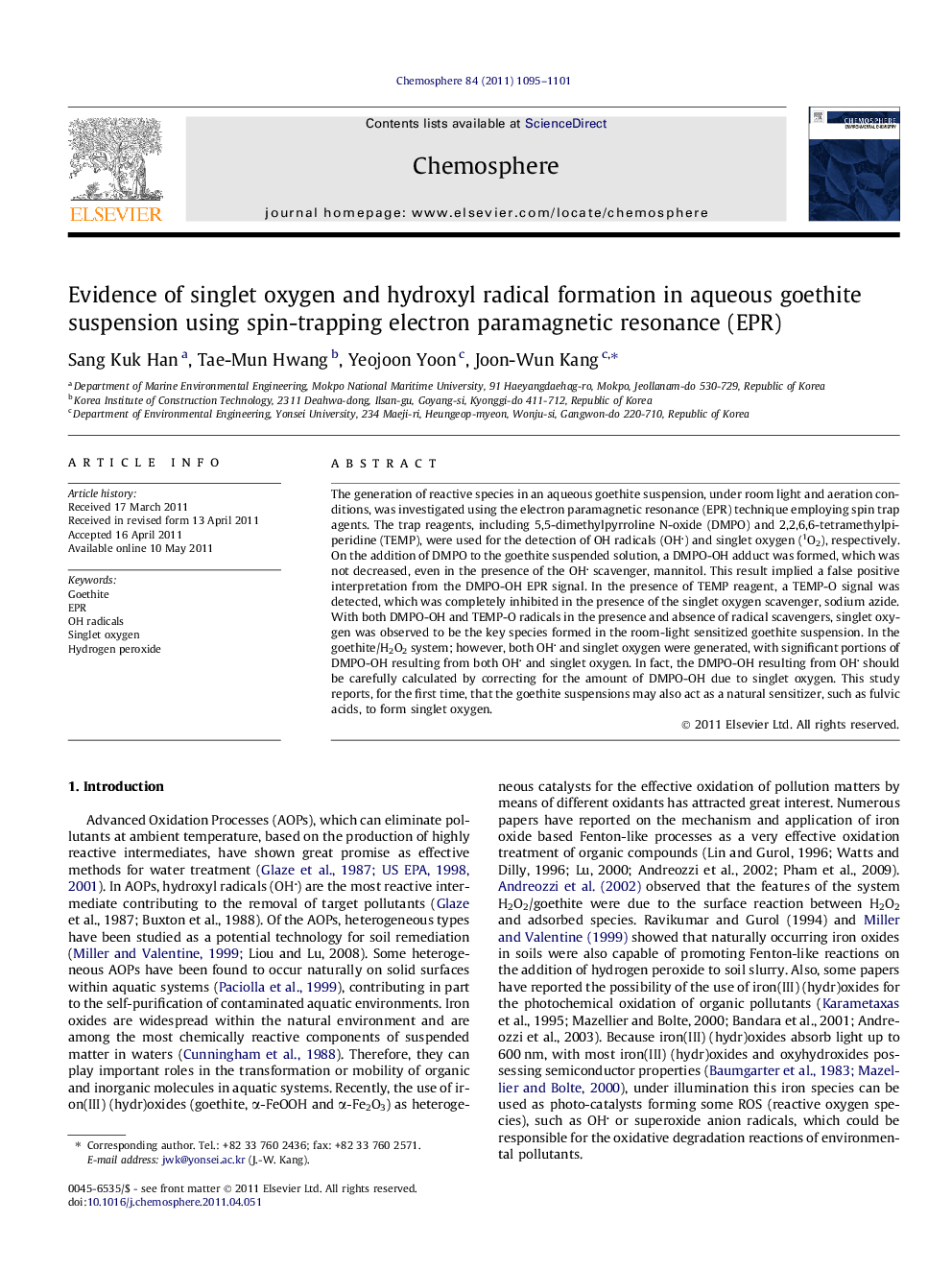| Article ID | Journal | Published Year | Pages | File Type |
|---|---|---|---|---|
| 4410971 | Chemosphere | 2011 | 7 Pages |
The generation of reactive species in an aqueous goethite suspension, under room light and aeration conditions, was investigated using the electron paramagnetic resonance (EPR) technique employing spin trap agents. The trap reagents, including 5,5-dimethylpyrroline N-oxide (DMPO) and 2,2,6,6-tetramethylpiperidine (TEMP), were used for the detection of OH radicals (OH) and singlet oxygen (1O2), respectively. On the addition of DMPO to the goethite suspended solution, a DMPO-OH adduct was formed, which was not decreased, even in the presence of the OH scavenger, mannitol. This result implied a false positive interpretation from the DMPO-OH EPR signal. In the presence of TEMP reagent, a TEMP-O signal was detected, which was completely inhibited in the presence of the singlet oxygen scavenger, sodium azide. With both DMPO-OH and TEMP-O radicals in the presence and absence of radical scavengers, singlet oxygen was observed to be the key species formed in the room-light sensitized goethite suspension. In the goethite/H2O2 system; however, both OH and singlet oxygen were generated, with significant portions of DMPO-OH resulting from both OH and singlet oxygen. In fact, the DMPO-OH resulting from OH should be carefully calculated by correcting for the amount of DMPO-OH due to singlet oxygen. This study reports, for the first time, that the goethite suspensions may also act as a natural sensitizer, such as fulvic acids, to form singlet oxygen.
► DMPO is used for the detection of OH in the goethite suspended solution (DMPO-OH). ► DMPO-OH could also be formed by the reaction path of singlet oxygen with DMPO. ► In the goethite/H2O2 system, DMPO-OH formation have resulted from singlet oxygen. ► DMPO-OH should be carefully calculated by correcting for the amount singlet oxygen. ► Goethite suspensions may act to form singlet oxygen in aqueous environment systems.
